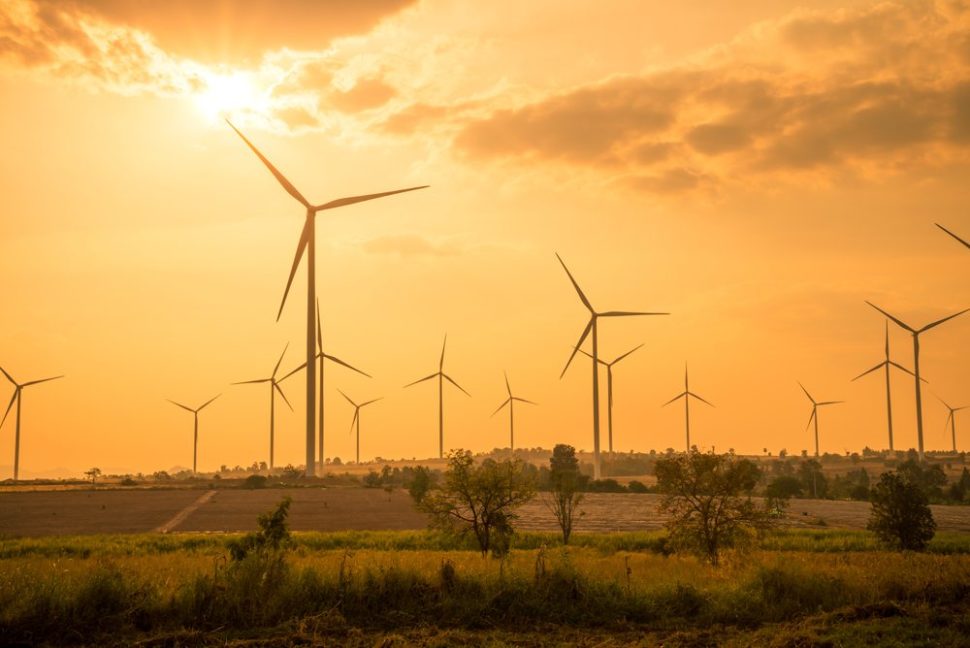As green energy becomes more widely available and economically viable, development is set to go ahead for the North Sea Wind Farm which will power over 80 million homes by 2027.
As we come into 2018, it is clear to see that green energy is certainly on the rise. It seems that the tide of fossil fuels vs. renewable energy has finally begun to turn, with even the largest oil conglomerates quietly admitting defeat.
With the Paris Climate Agreement in full swing in Europe, almost every nation of the EU has been recording record highs of green energy output. Last year, wind production in Germany was so high that some customers’ electricity bills went into the negative, leading them to be paid to use green energy.
Overall, wind energy alone now accounts for 10% of Europe’s power output, and this is only set to rise over the coming years. One of the biggest wind energy projects set to be completed over the next decade is the North Sea Wind Farm, which will produce a staggering 30 gigawatts, which is double the current offshore wind output of the whole of Europe.

Terraforming and Transportation: Challenges in Green Energy
The North Sea Wind Farm, which will be based on the northeast end of the Dogger Bank in the English Channel, is gaining traction in its development and is set to be fully operational by 2027.
The main backer of the project is Dutch energy company TenneT, who plan to create a six sq. Km island which will house an airport, harbor, and power converters surrounded by wind turbines to provide power to nine nearby countries (Netherlands, Germany, Belgium, Luxembourg, France, Denmark, Ireland, Norway, and Sweden).
Terraforming and island building have become a common aspect of a number of different nations’ development programs. Projects such as the ostentatious and decorative islands of Dubai and the practical additions of airports and military barracks in the South China Sea have proven that it is certainly possible for these islands to be made.
Despite this, the North Sea Wind Farm will be a man-made island around 100 kilometers (60 miles) out to sea, a far more ambitious project which will be extremely difficult to plan logistically and efficiently.
When asked about the difficulties of creating a man-made island in the notoriously turbulent North Sea, the manager of TenneT’s offshore wind development, replied: “Is it difficult? In the Netherlands, when we see a piece of water we want to build islands or land. We’ve been doing that for centuries. That is not the biggest challenge.”
Costing over 1 billion dollars, the main issue of the development of the North Sea Wind Farm is not the construction of the island or equipment but the transportation of this green energy back to the mainland. Wind energy is difficult to store without losing significant percentages of the energy generated, and the long distances between the farm and the mainland will be a considerable issue for the developers to address.
To attempt to combat this issue, TenneT is planning to pair with Gasunie, a Dutch gas company, which have offered to transform the wind energy created at the farm into gas energy, making it far easier to transport over large distances. This could solve the farm’s problem of energy transportation, but the infrastructure and organization needed to transport this energy will certainly be colossal.
It seems that there is little to hold back the North Sea Wind farm from development, although life could be made easier by the recent divorcee of the EU, The United Kingdom.

Brexit’s Effect on Europe’s Green Energy Goals
Over the past number of years, Britain has kept up with the rest of Europe in its development of green energy and the steady decline in the use of coal in its power production. In fact, 2017 was a record year for the UK, with around 30% of their energy being produced by green energy.
The British government has already stated that they want to phase out the use of coal in energy production by 2025 and nuclear plants by 2030. Over £40 billion is projected to be spent on the energy sector of Britain by 2020, a considerable figure which shows the commitment to energy overhaul within the UK at the moment.
Overall, British citizens are using less electricity with every year. In 2017 the UK used as much electricity as it did in 1987, even while having an increase of 10 million citizens in its population.
Despite having 10 million more people, the #UK used as much #electricity in #2017 as it did in #1987Click To TweetBritain’s Future as a Potential Outsider
However, the looming changes of Brexit may severely hinder the UK from taking steps over the next few years to become entirely reliant on green energy. With their departure from the EU, Britain is now excluded from many of these projects such as the North Sea Wind Farm and have made it difficult for themselves to get back into the room with these negotiations.
Some studies claim that investment in British green energy will fall 95% over the next three years due to a loss of European subsidies and economic uncertainty. It makes little sense for energy companies to invest in projects and developments in the UK when they are guaranteed larger subsidies and better returns from other European nations residing in the EU. This could be a serious concern for the UK, not only for its carbon emission goals but for the nation’s economy as a whole.
It’s not true to say that Brexit will lead to a winding down of the UK’s green energy production, and it’s certain that as each year progresses they will continue to develop more renewable resources. However, being excluded from these large-scale international projects and EU subsidies will lead to Britain either supporting itself entirely in these projects or asking for assistance from the EU–almost as a form of political alimony.
Britain is not explicitly excluded from the North Sea Wind Farm development scheme, but its absence from the list of contributing nations is noticeable and may be a sign of things to come in the future.


















Comments (0)
Most Recent